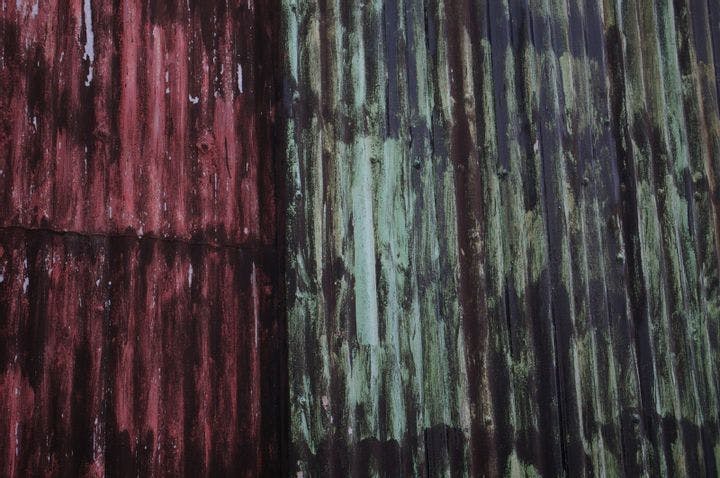Spring 2008
Peddling Metal
– Daniel Akst
Daniel Akst looks at a paean to an underappreciated metal: corrugated iron.
People are forever debating which inventions have had the greatest impact on the world, but it’s safe to say that few make much of a case for corrugated metal. Now this humble yet versatile material has found its advocates in architecture writer Adam Mornement and engineer Simon Holloway.
To judge by its cover, Corrugated Iron is just another oversized, design-fetish coffee-table book, and in fact it is packed with full-color images that will make it catnip to architecturally minded modernists. Yet from the outset it’s clear that the authors mean to present not just the accidental visual glories of shantytowns (or the premeditated ones designed by pros) but the biography of a building material that crops up everywhere. Corrugated steel, mostly, as well as other wavy metals (the authors intend “corrugated iron” generically), can be found on hillside shacks in South Africa and South America as well as in iconic, industrial-chic homes in Southern California and Sydney. Cheap, light, and sublimely reflective, corrugated iron shimmers sexily when new, burns only in slow motion as it ages (by rusting), and is even biodegradable.
“Corrugated iron is a material of the frontier,” the authors write. “It makes life possible in places that would otherwise be uninhabitable, whether due to extreme climate, inhospitable terrain, the scarcity of local building materials, or the sheer scale of demand for shelter.”
Invented in England in 1829, corrugated iron proved vastly stronger than its flattened antecedents and thus quickly found use in train stations, shipyards, and factories, which required great expanses of covered space without a lot of expensive and cumbersome support structures. Before long, empire and industrial revolution made it the material of choice for cheap, adaptable buildings that could be shipped in parts and rapidly erected to house gold miners, soldiers, stores, churches, and practically anything else.
The book is replete with fascinating reproductions of posters, catalog copy, and architectural renderings showing buildings such as the charming “East India Villa,” a prefabricated house clad in corrugated iron and marketed to emigrants headed for Australia. Colonization and war made the material ubiquitous, especially in the form of the World War I–era Nissen hut and its famed American descendant, the Quonset hut of World War II. Corrugated metal also permitted “the epic scale of airship hangars.”
Despite its early role in London as a cutting-edge material, corrugated metal has always had a somewhat raffish image, for it lacks the solidity of stone or the natural warmth of wood (though these shortcomings are somehow never held against vinyl siding). Shanties the world over are made from corrugated metal, and humanitarian organizations make extensive use of it to house refugees and people who live in disaster zones. Yet it has also won favor with famous architects, including Jean Prouvé, Frank Gehry, and Norman Foster. Corrugated iron is especially prominent in Australia, where Glenn Murcutt’s lyrical use of it to clad high-design homes no doubt helped him win the prestigious Pritzker Architecture Prize.
Corrugated Iron is a wonderful book, even if the authors are sometimes scarily indefatigable in their fervor for the subject, which is perhaps inevitable given that the book’s back flap says Holloway has a “great passion” for “researching and communicating the history of corrugated iron.” But if the historical text flags occasionally, the stunning color images hold our attention. Especially striking are the ornate chapel built in Scotland by Italian prisoners of war, the shockingly modern Sheerness Boat Store (c. 1860) in England, and the many photos of sinuous structures by Japanese architect Shuhei Endo, which are by themselves worth the price of the book.
I live in a corrugated-steel house and can attest that the stuff has its quirks. It tends to vaporize the geraniums by reflecting the sun’s heat, for example. And whatever you do, don’t forget to install lightning rods. As someone wrote of the British consul’s corrugated-iron house in Panama in 1855, it’s “a great target for all the artillery of heaven.”
* * *
Daniel Akst, a recent public policy scholar at the Wilson Center, is a novelist and essayist living in New York's Hudson Valley.
Reviewed: "Corrugated Iron: Building on the Frontier" by Adam Mornement and Simon Holloway, Norton, 2007.
Photo courtesy of Flickr/Andrea Kirkby
